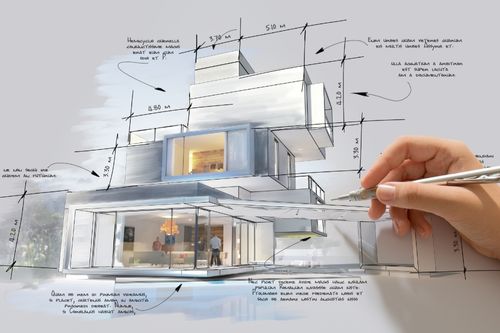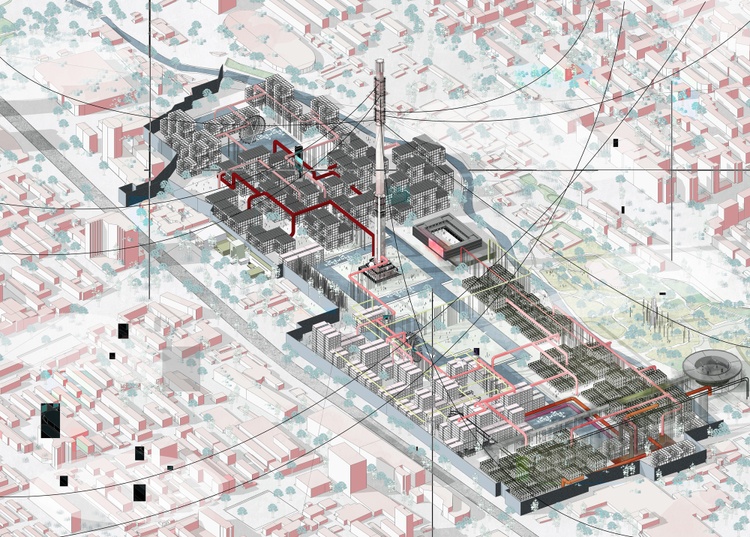Changing Spaces: The Vision of CDA Architects for Modern Living
Changing Spaces: The Vision of CDA Architects for Modern Living
Blog Article
Understanding the Collaborative Refine Between Engineers and Designers in Modern Construction Projects
The collective procedure between designers and designers is vital in modern building and construction tasks, as it harmonizes design intent with engineering usefulness. Discovering these dynamics reveals understandings that could dramatically affect job outcomes and overall industry criteria.
The Importance of Cooperation
The joint synergy between designers and designers is essential for the successful understanding of any building project. This partnership unites distinct competence and perspectives, enabling the assimilation of cutting-edge style with practical design remedies. By interacting, designers and engineers can make sure that a job not only meets aesthetic and practical requirements yet likewise sticks to safety, sustainability, and monetary restraints.
Cooperation fosters a shared vision, facilitating the placement of objectives and assumptions from the beginning. This positioning is essential in dealing with prospective challenges and mitigating dangers that might emerge during the project lifecycle. Moreover, a collective approach allows for the efficient allotment of resources, maximizing both time and cost.
The value of collaboration encompasses the repetitive process of layout and construction, where feedback from engineers can educate building decisions, causing more feasible and sustainable styles. Conversely, architects can influence designers to think artistically regarding exactly how to attain structural integrity without endangering creative intent. Inevitably, the collaborative relationship in between engineers and engineers is not just useful; it is basic to the development of top quality, practical, and cutting-edge developed atmospheres that satisfy the needs of society.
Communication Techniques and Devices
Efficient communication techniques and tools are crucial for promoting partnership between architects and designers throughout the task lifecycle. Developing clear networks of interaction is necessary to make sure that all staff member are aligned with task goals, timelines, and obligations. Regular meetings, both in-person and digital, offer opportunities for stakeholders to review progression, address worries, and make notified decisions.

Furthermore, taking on collaborative interaction devices, such as Slack or Microsoft Teams, permits immediate messaging, documents sharing, and recurring discussions, advertising an extra nimble reaction to arising issues. Paper administration systems also play an important function in organizing project documentation, making certain that all employee have access to the current info.
Shared Goals and Project Vision
A combined job vision functions as the structure for successful collaboration in between engineers and engineers (cda architects). This shared vision not just lines up the efforts of both celebrations yet also develops an usual structure for decision-making throughout the task's lifecycle. By expressing clear objectives, stakeholders can successfully browse the intricacies of contemporary construction jobs, guaranteeing that both visual and practical requirements are satisfied
Establishing common objectives entails open dialogue and a complete understanding of each technique's contributions. Engineers normally concentrate on layout intent, spatial connections, and individual experience, while designers emphasize structural integrity, systems performance, and conformity with laws. When these point of views are aligned, the outcome is a cohesive project that abides by both creative desires and technical usefulness.
Furthermore, a well-defined project vision cultivates liability among staff member, urging each participant to take possession of their role in accomplishing the wanted result. Regular check-ins and collective workshops can better enhance this commitment, permitting modifications to be made as the task advances. Eventually, a common vision not just enhances teamwork yet likewise elevates the quality of the final deliverable, resulting in successful task completion.
The Role of Technology
Leveraging technology has come to be important in enhancing collaboration between designers and designers. The combination of sophisticated software program devices promotes real-time communication and info sharing, making it possible for groups to function extra successfully and efficiently. Building Info Modeling (BIM) attracts attention as a crucial technology, enabling both designers and engineers to produce detailed 3D models that envelop style intent and structural honesty. This shared aesthetic representation reduces misunderstandings and improves the decision-making process.
Furthermore, cloud-based platforms allow smooth collaboration, allowing job stakeholders to access and upgrade task information from anywhere. This fosters a society of openness and liability, as modifications can be tracked and assessed in real-time. Furthermore, mobile applications more boost communication, giving on-site groups with prompt access to task requirements and updates.
Arising innovations such as expert system and equipment knowing are additionally news starting to contribute in predictive analysis, assisting teams recognize prospective issues prior to they develop. Eventually, the function of innovation in architecture-engineering partnership not just enhances process performances however additionally boosts innovation, resulting in even more successful task end results. By embracing these technological advancements, engineers and engineers can make sure a much more natural and productive joint procedure throughout the construction lifecycle.
Situation Researches in Effective Partnerships
Numerous situation research studies highlight the profound impact of reliable collaborations between architects and engineers on project outcomes. One noteworthy example is the cooperation on the High Line in New York City, where landscape architects, engineers, and city organizers interacted to change an abandoned rail line right into a dynamic public park. This multidisciplinary method not only enhanced the aesthetic high quality but also Check This Out made sure architectural safety and environmental sustainability.

The Burj Khalifa in Dubai further shows the significance of joint initiatives - cda architects. The combination of design and design know-how made it possible for the job team to accomplish unmatched heights while adhering to safety and security policies and aesthetic vision
These instances underscore the significance of communication, trust fund, and shared objectives. In today's intricate construction atmosphere, such partnerships are crucial to navigating obstacles and supplying projects that satisfy both practical and visionary goals.
Conclusion
In conclusion, the partnership in between architects and designers is crucial for the success of modern building tasks. Efficient interaction strategies, a additional resources shared project vision, and the combination of advanced technologies are essential components that promote this collaboration.
Report this page